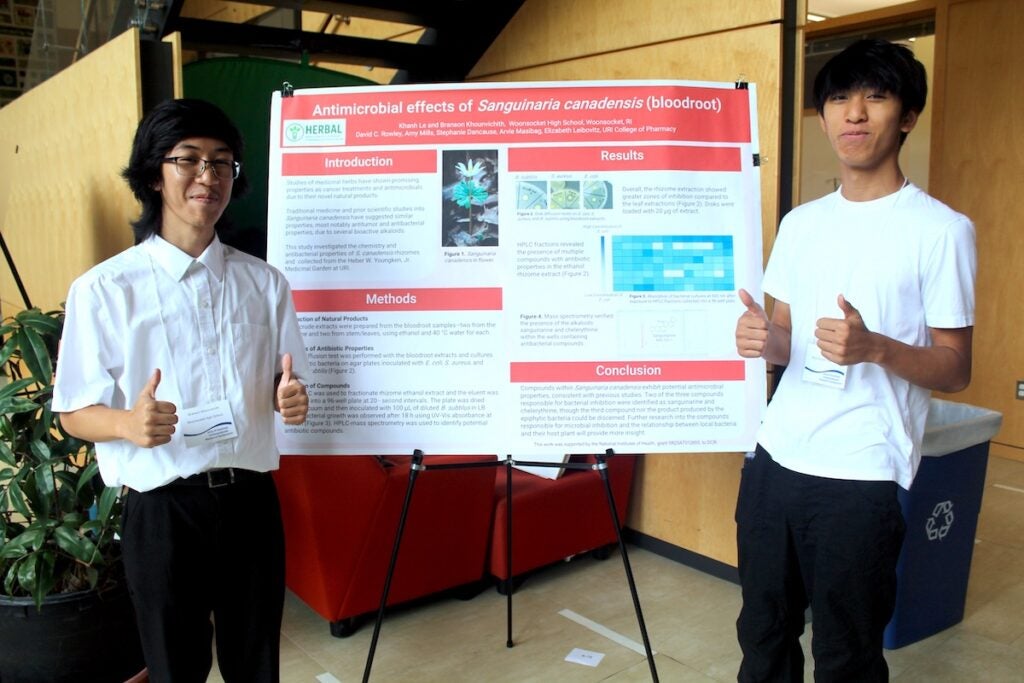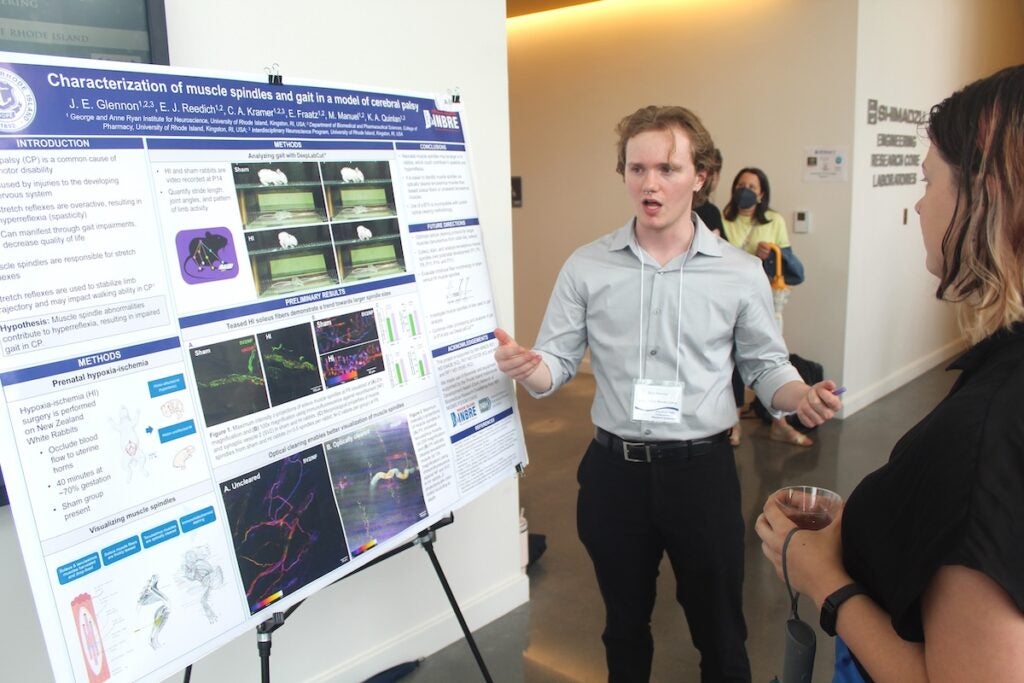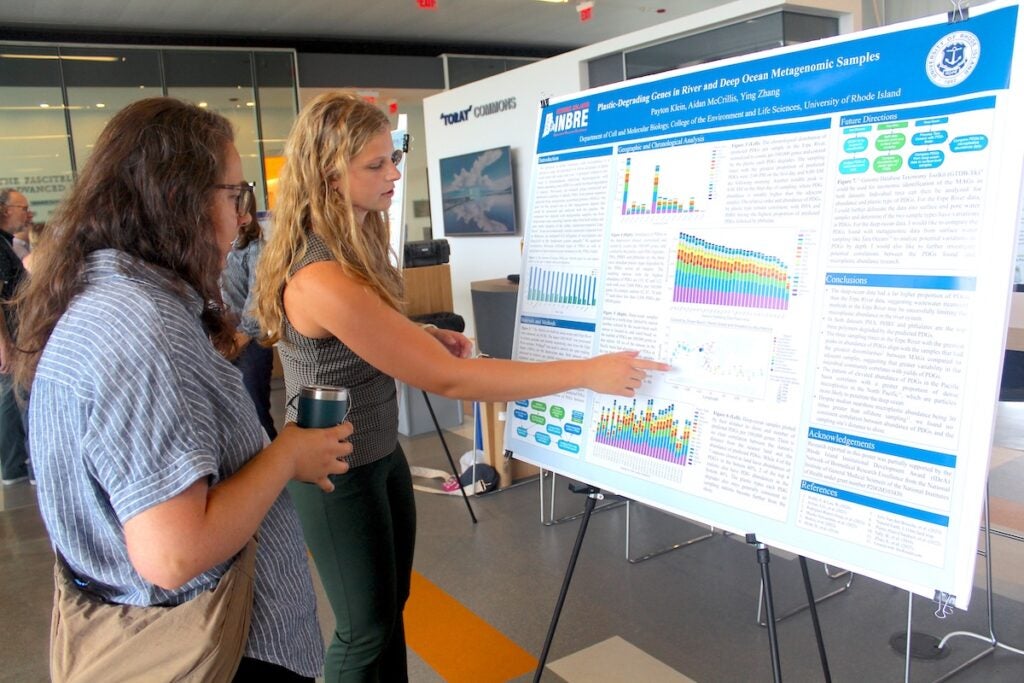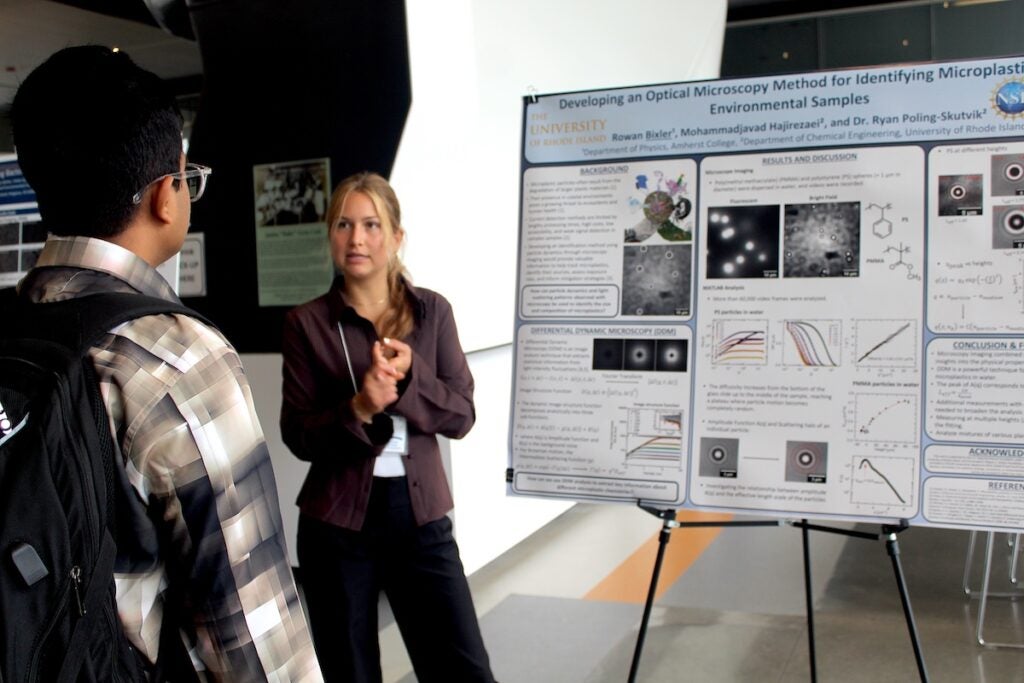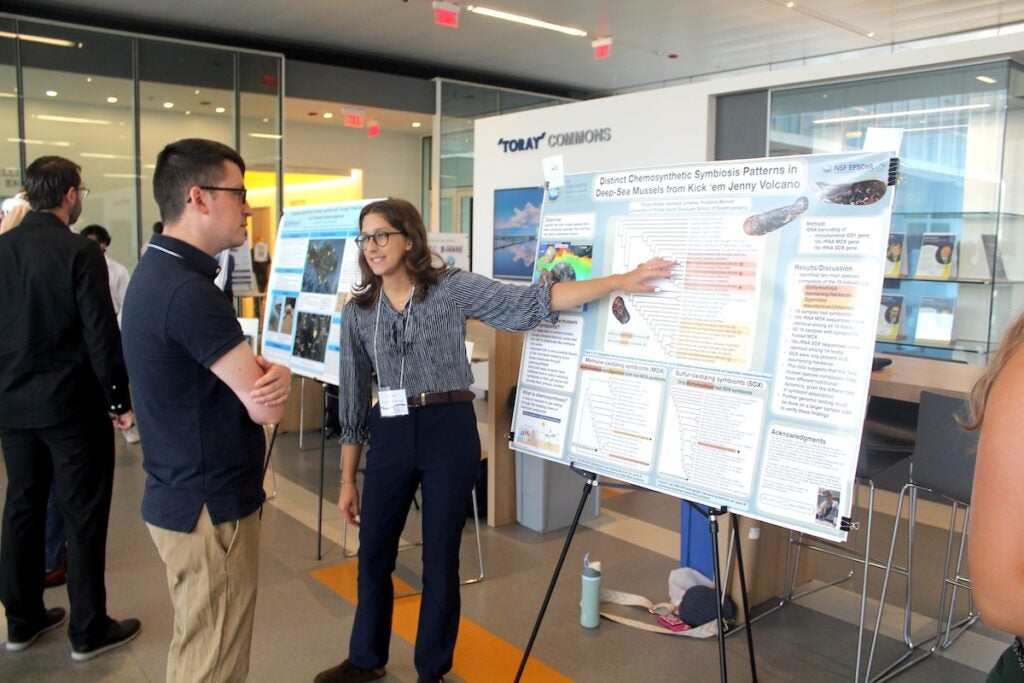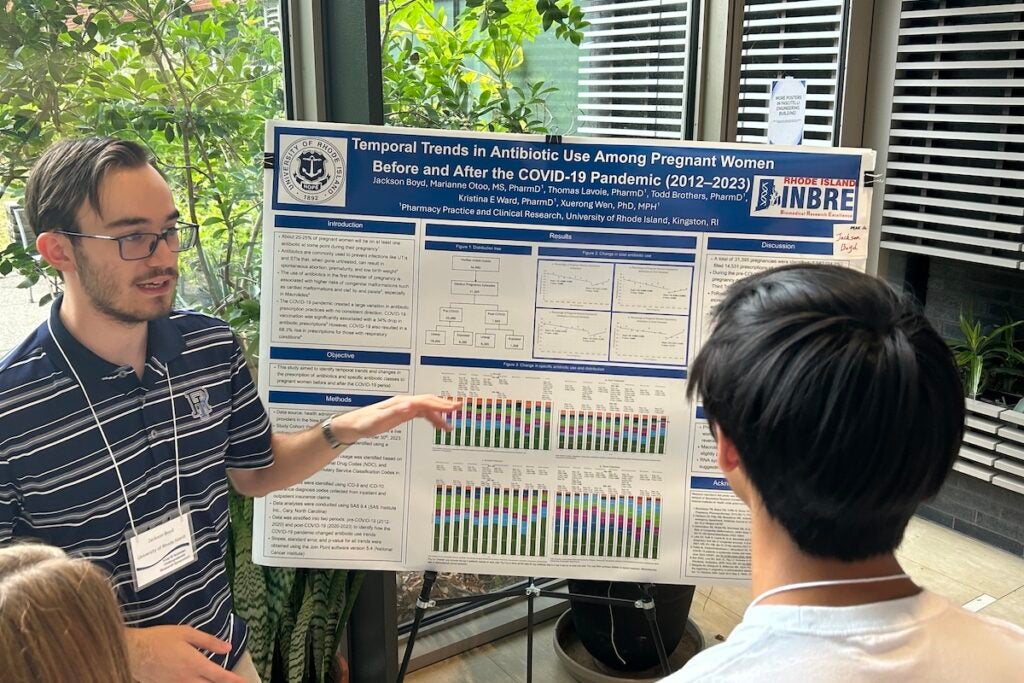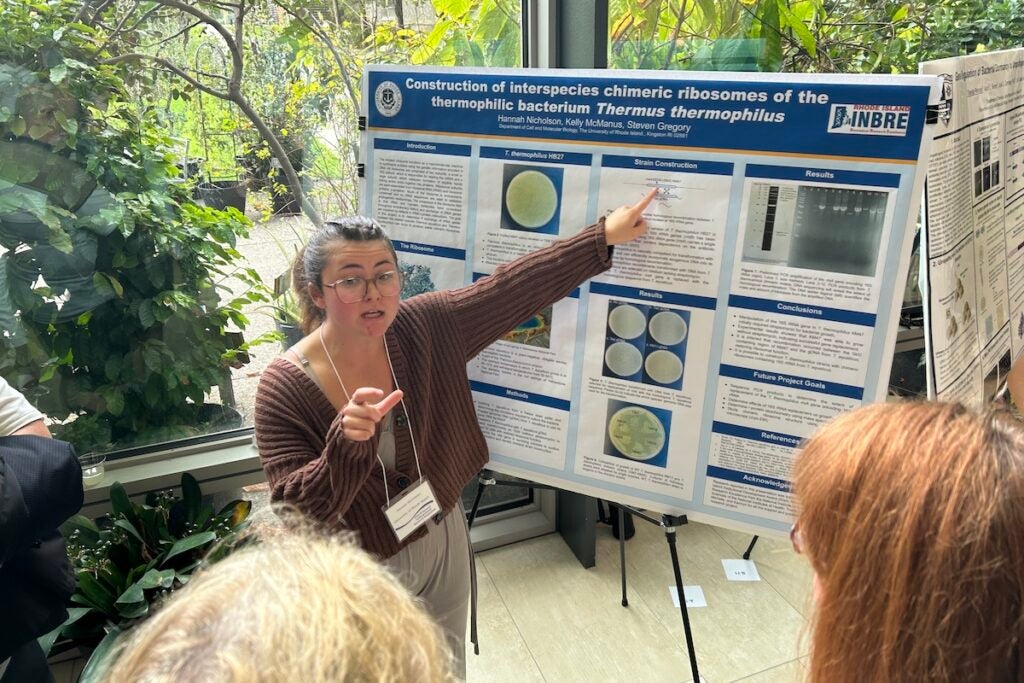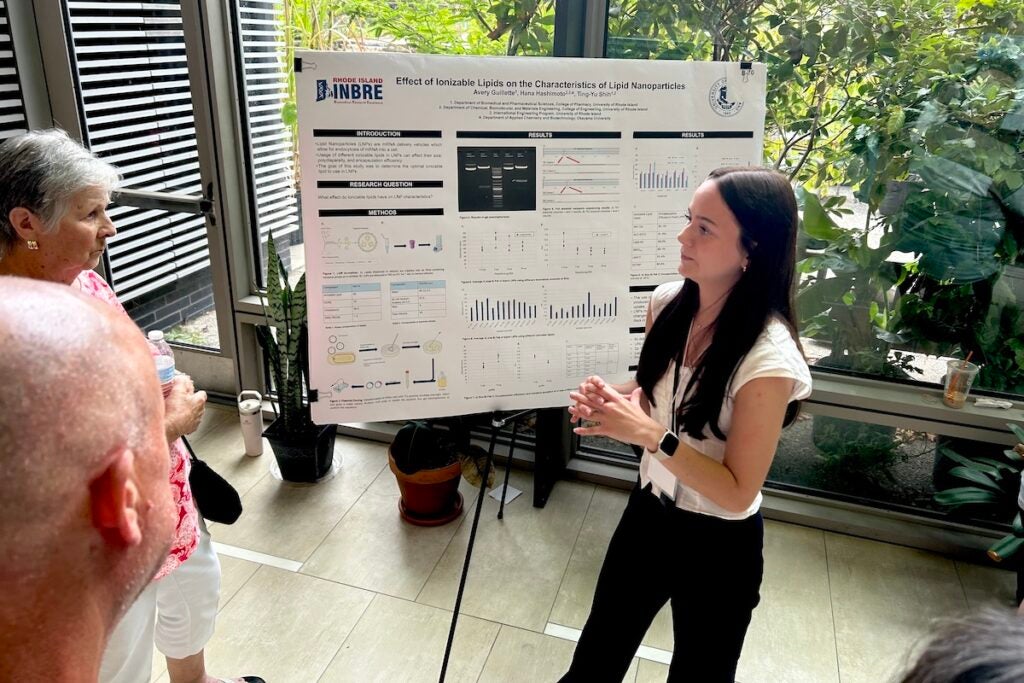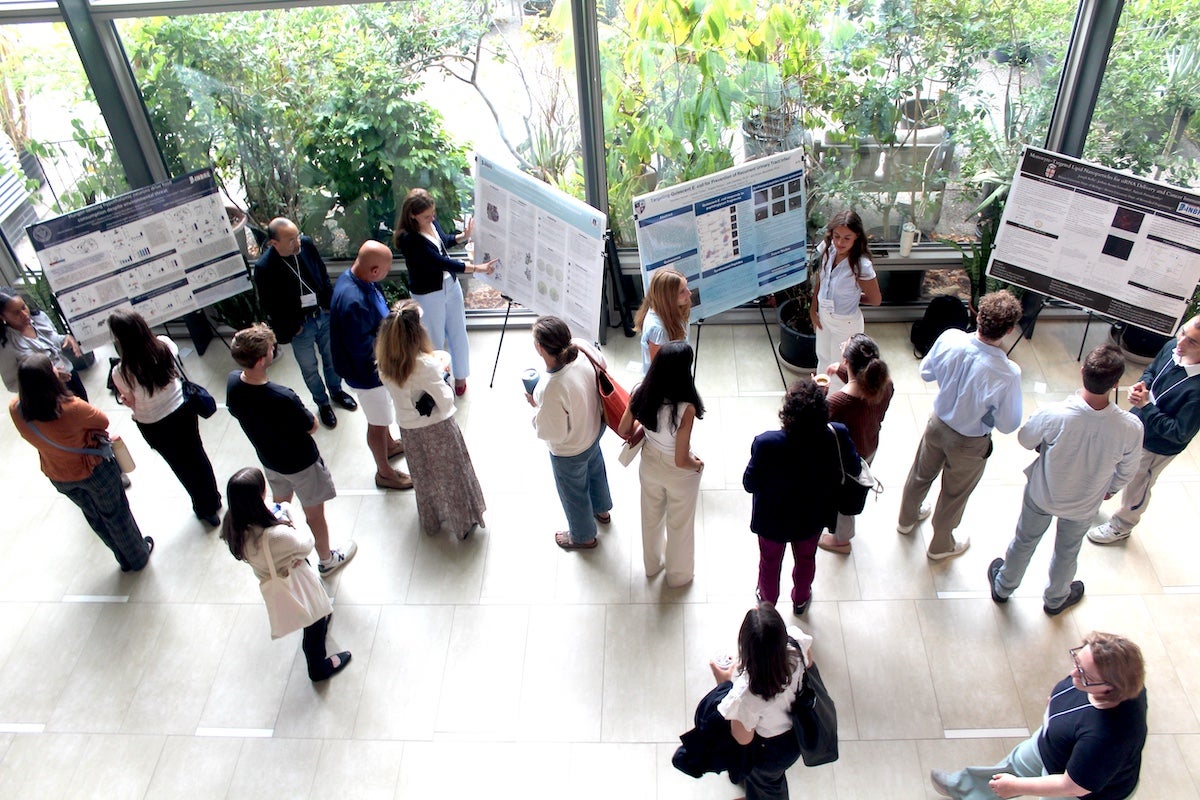RI-INBRE’s Summer Undergraduate Research Fellowship attracts hundreds of students from all 10 affiliated colleges and universities in RI
More than 350 students and faculty members from 10 colleges and universities around the state converged on the University of Rhode Island Aug. 1 to showcase 150 biomedical research projects they’ve spent the summer studying, as RI-INBRE, RI-EPSCoR-NEST, and Navy STEM hosted URI’s 21st annual Summer Research Symposium.
The Rhode Island IDeA Network of Biomedical Research Excellence (RI-INBRE) program started in 2001, and students from URI’s Summer Undergraduate Research Fellowship began presenting at the poster symposium in 2004. The poster presentation in Avedisian Hall and the Fascitelli Center for Advance Engineering capped off the 10-week SURF internship program, during which students are fully immersed in all aspects of mentored research projects in biomedical, marine sciences, and engineering.
Based on URI’s Kingston Campus, the SURF program and symposium is open to students from all institutions affiliated with the RI-INBRE program, which include URI, Rhode Island College, Salve Regina University, Brown University, Providence College, the Community College of Rhode Island, Roger Williams University, Bryant University, New England Institute of Technology and Johnson & Wales University. Over the last 24 years, the program has expanded beyond biology and chemistry, and pharmaceutical sciences to include neuroscience, engineering, biotechnology, nursing, and other biomedical and health sciences.
The SURF program has faced unique challenges this year, due to federal cuts to research funding, requiring the INBRE-affiliated schools to fill the gaps and keep the program running, according to URI Pharmacy Professor Bongsup Cho, also the RI-INBRE program director.
“The successful completion of this year’s SURF training program was made possible by the strong support from the RI-INBRE network leadership,” Cho said. “They really stepped up to deal with the funding uncertainty we faced at the beginning of the SURF program. We are incredibly grateful for their unwavering commitment during this challenging time.”
Leading up to their poster presentations, the SURF students worked 30 to 40 hours a week on their projects, learning how to construct a study, form and test a hypothesis, and ultimately communicate their findings to peers. The students researched such varied topics as the opioid epidemic, cerebral palsy, microplastics, cancer, heart disease, and more.
Bioplastic degradation, or lack thereof
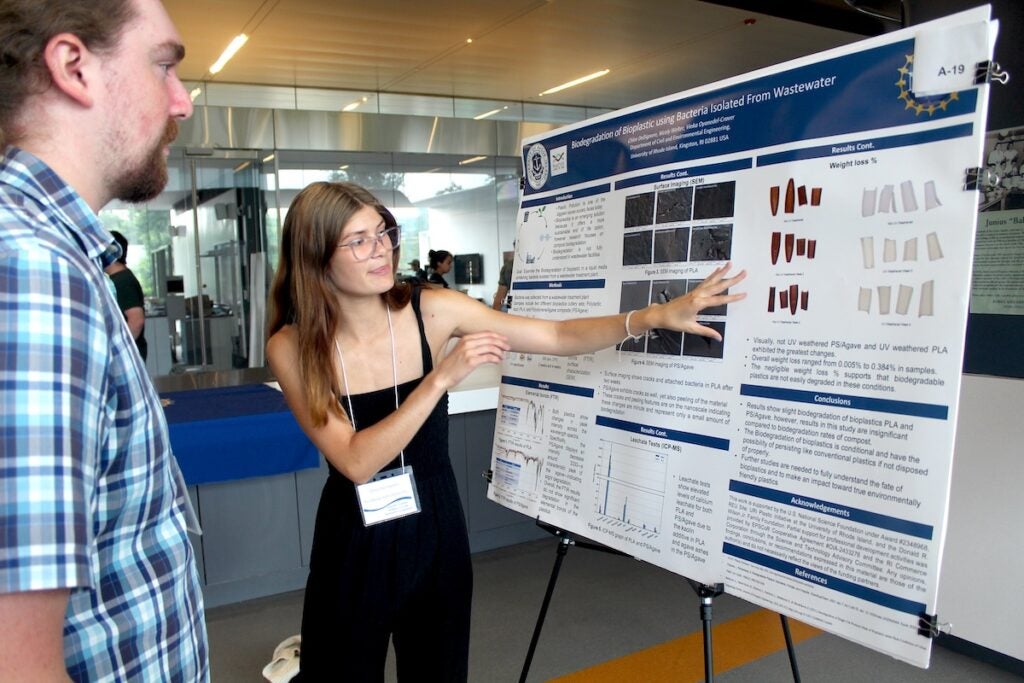
Senior earth sciences major Chloe DelSignore worked on the biodegradation of bioplastics using bacteria isolated from wastewater. While bioplastics, made from biological substances, purport to biodegrade more easily in the environment than more common petroleum-based plastics, they are unregulated and often contain only small amounts of biodegradable substances, DelSignore said. Like a lot of litter, these plastics frequently end up in waterways and, ultimately, wastewater treatment plants, prompting DelSignore to wonder whether they would break down as advertised.
She and her team collected bacterial wastewater from a treatment plant in Providence, and ordered a set of cutlery advertised as “bioplastic.” She placed the supposedly biodegradable forks, knives and spoons in the bacterial solution, incubated them for 2-4 weeks, and repeatedly analyzed the resulting degradation.
“The moral of the story is that there are signs of biodegradation, but they are so insignificant that it wouldn’t make any difference if it was in wastewater,” DelSignore said, noting the results showed a less than 1 percent reduction in plastic weight. “The conclusion is more research is needed to improve bioplastics and their biodegradability, and a lot of regulation needs to be put in place to actually come up with biodegradable plastics. It’s also a behavioral thing among consumers. We need to actually put these plastics in a place where they are going to end up in a compost facility to be broken down, rather than a landfill or the side of the road.”
Protective bacteria for aquaculture farms
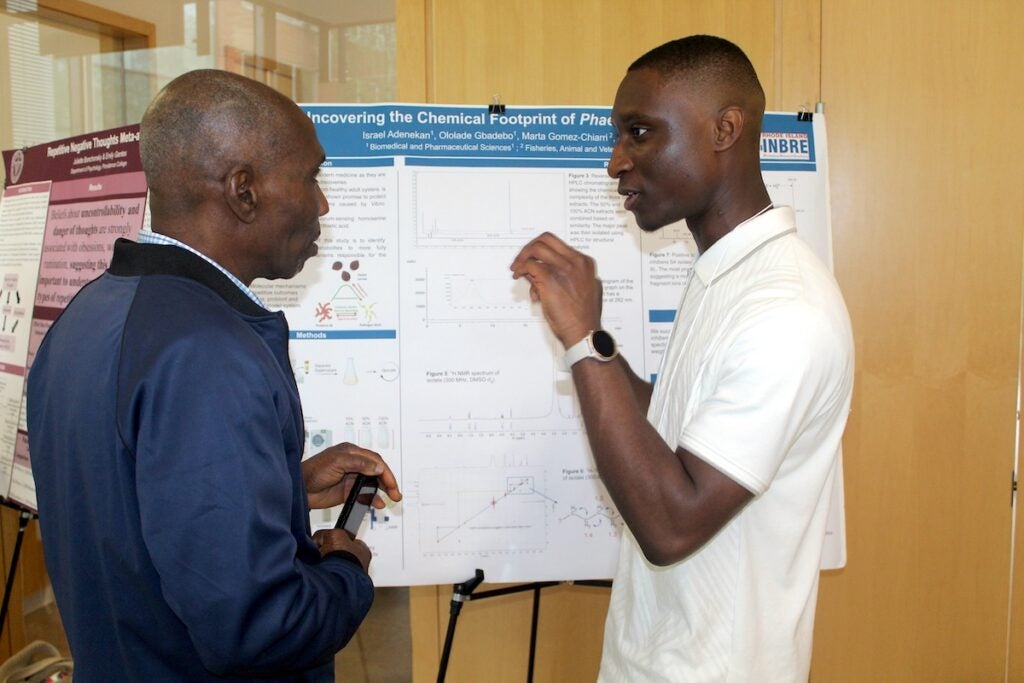
Doctor of Pharmacy student Israel Adenekan studied how certain bacteria can have protective benefits for oyster larvae, a benefit for aquaculture farmers to help ward off pathogens among their crops. Adenekan’s team grew and isolated multiple bacterial compounds and analyzed the metabolites they produce, finding probiotic benefits.
“In aquatic farms, they breed these animals, which can be very susceptible to pathogens, so you want to make sure you have some protection for them,” Adenekan said. “We grew the bacteria to produce the metabolites and isolate them, to find those that protect oysters and use them in the aquafarms as protection from pathogens.
3D model helps show microplastics’ effects on body
Carlynn Rychener, a junior biochemistry and molecular biology major at the University of South Carolina, traveled to URI for the SURF program, studying the impact of microplastics on the human body. Aiming to depict the damage to the body in an accessible, three-dimensional way, Rychener created a model of a human organ, using a 3D printer and hydrogel of various polymers.
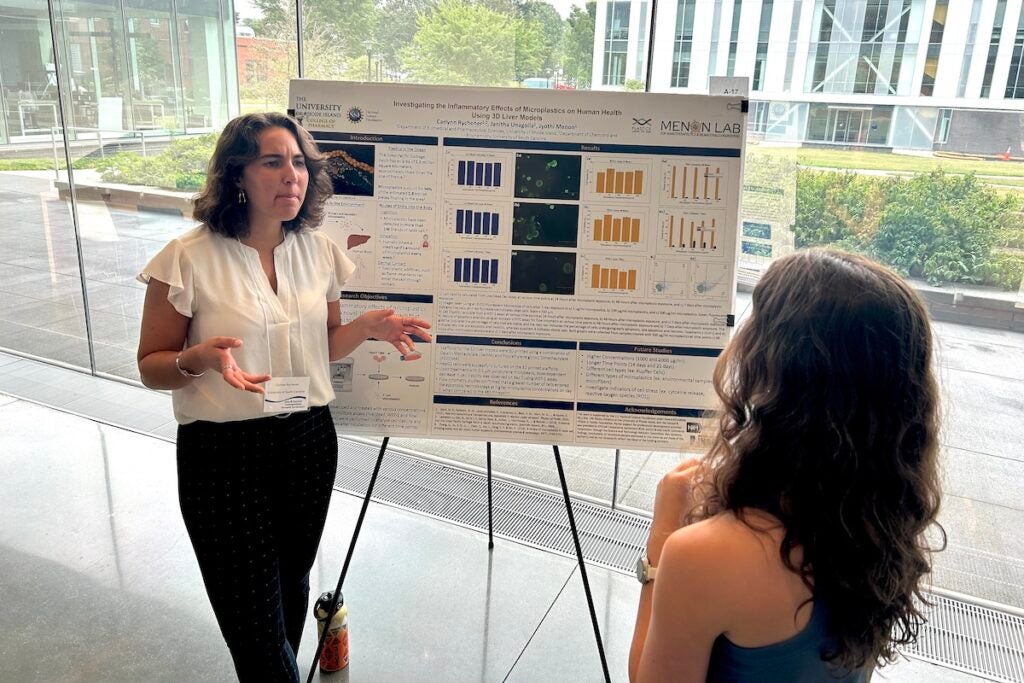
Rychener applied living cells to the gelatin-like substance that promotes cell growth, cultivating them to simulate a human organ, specifically the liver. She then applied varying concentrations of microplastics to see how they interacted with the living cells. Within seven days, she saw statistically significant decreases in cell viability, indicating that over time, microplastics are killing the cells.
“Microplastics are causing cell death, specifically in the liver. It is showing us that there is more research needed at longer timeframes,” Rychener said. “At longer times, there could be significantly less viability, meaning more and more cells dying because of long-term exposure to microplastics. This 3D model is really laying the groundwork for future cell research. We can test drugs on these models and observe how microplastics affect cells. It is just a better mode of seeing what’s going on inside our body.”
Helping early diagnosis of Fanconi anemia
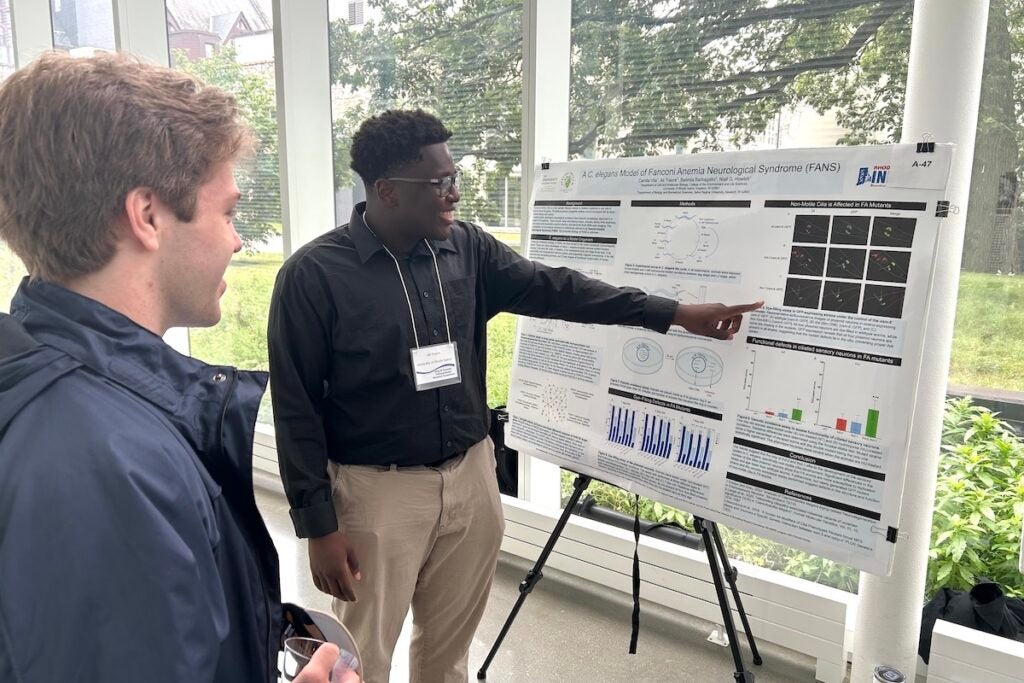
Ali Traore, a rising junior majoring in biochemistry, studied Fanconi anemia, a rare genetic disease that can cause cancer, as well as neurological damage, including cognitive decline, vision and hearing loss, seizures, and ataxia. However, little is known about the molecular mechanism of Fanconi Anemia Neurological Syndrome.
Traore exposed nematodes to FANS and incubated the worms with a dye that allows researchers to see the molecular structure and diagnose mutations in the neurons.
“FANS can cause a mutation that defects neurons, specifically the development of nonmodal sensory neurons,” Traore said, noting those mutations can help indicate the presence of Fanconi anemia. “Being able to study these neurological diseases in worms gives us a fundamental understanding of the sensory neurons and defects that can be applied to humans. We hope doctors can use our results to provide interventions to catch FA early on.”
The actual findings of the student researchers, who each work with a faculty mentor throughout the program, is only part of the goal of the SURF program, which aims to prepare younger scientists for a career of research discovery. The RI-INBRE programs are open to undergraduate students from any college.
“The RI-INBRE program support students and early career researchers, who help make critical discoveries to benefit all of society,” Cho said. “We have a very well-organized professional development program, which allows them to explore their career options in biomedical research. Students get a whole, well-rounded training in research, including how to formulate scientific hypotheses, design and conduct experiments, and analyze data, how to put together the posters, and how to communicate the science to their peers.”
Applications for the programs open in January and are due in February. Learn more.
